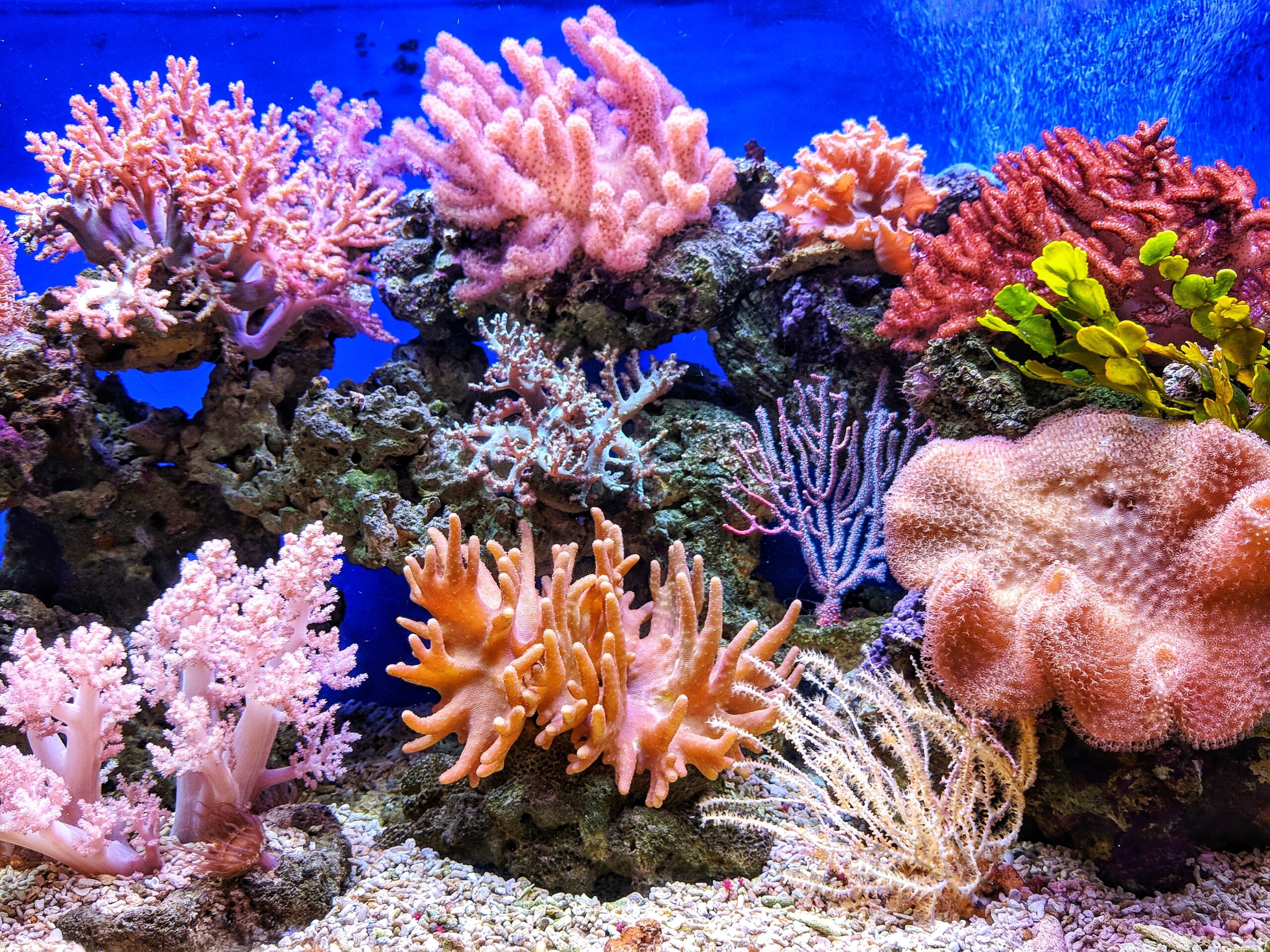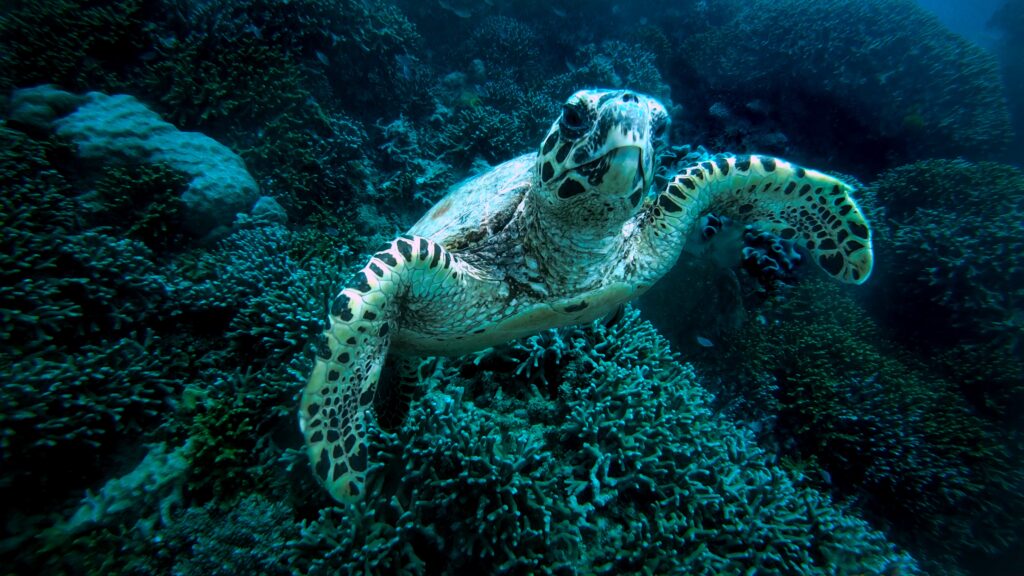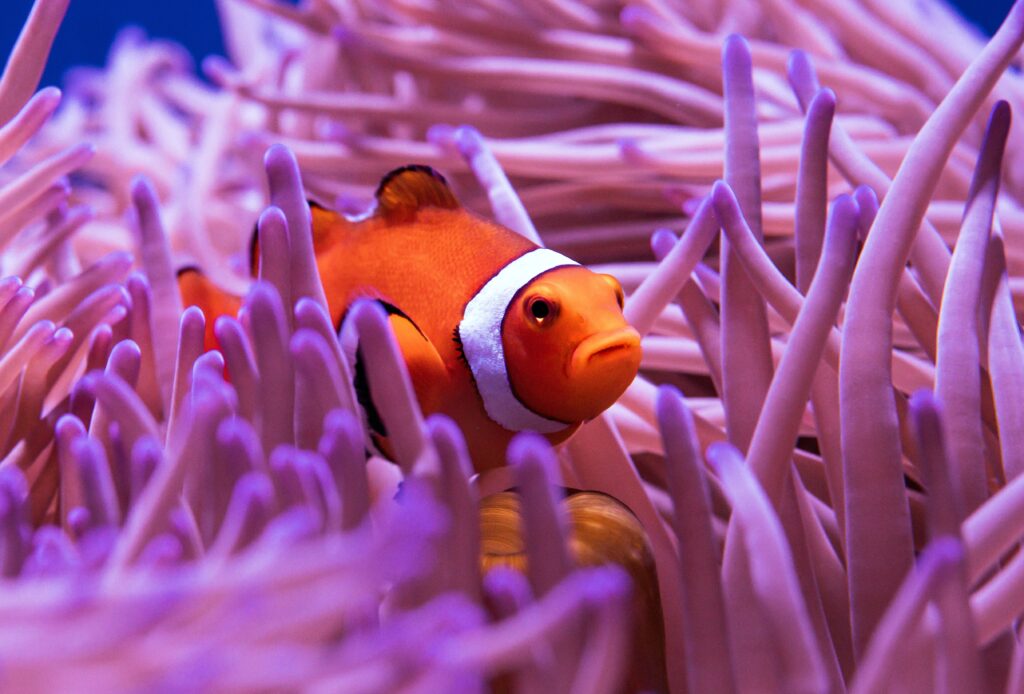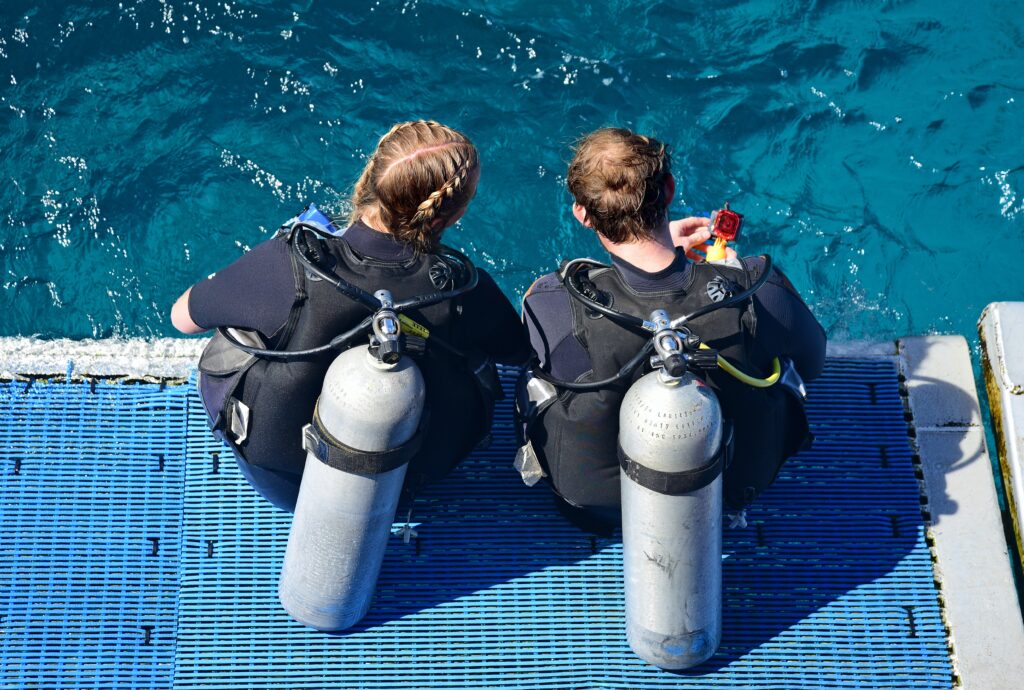Diving into the Vibrant Coral Reefs of the Great Barrier Reef
Recently updated on August 19, 2023
Total words: 2295

Table Of Content
- Exploring the Great Barrier Reef: A Must-See Natural Wonder
- The Benefits of Diving into the Vibrant Coral Reefs
- The Colorful Marine Life of the Great Barrier Reef
- Factors Affecting the Health of Coral Reefs
- Tips for Responsible Diving in the Great Barrier Reef
Introduction
Welcome to Australia! Home to the world’s largest coral reef system, the Great Barrier Reef (GBR). Spanning over 2,300 km in length and covering an area of over 344,400 sq km, the GBR is one of the seven wonders of the natural world. It’s an amazing phenomenon and a must-see destination for everyone!
For those looking to explore the depths of the GBR, scuba diving is the perfect way to do it. Whether you’re a beginner or an experienced diver, the GBR offers an unforgettable experience that you won’t soon forget. With its vibrant coral and marine life, you’re sure to be awe-struck by the beauty beneath the surface. So come along with us as we dive into the world of the Great Barrier Reef!
Exploring the Great Barrier Reef: A Must-See Natural Wonder
The Great Barrier Reef is one of the world’s most incredible and majestic natural wonders. Home to a diverse array of marine life, the Great Barrier Reef is a spectacle to behold. From vibrant coral reefs to incredible sea creatures, the Great Barrier Reef is truly an unforgettable experience.
If you’re looking for a unique and memorable experience, diving into the Great Barrier Reef is a must-see. Located off the coast of Australia, the Great Barrier Reef is one of the world’s largest coral reef systems. Spanning over 2,300 kilometres in length, the Great Barrier Reef is home to over 1,500 species of fish, 400 species of coral, and more than 4,000 species of mollusks.
One of the best ways to explore the Great Barrier Reef is by scuba diving. Scuba diving allows you to get up close and personal with the vibrant coral reef and its inhabitants. From colourful fish to majestic sea turtles, the Great Barrier Reef has something for everyone. You can also explore amazing shipwrecks and sunken ships that are located in the Great Barrier Reef.
The Great Barrier Reef is also home to an abundance of marine life. The Great Barrier Reef is home to some of the most diverse species of marine life in the world, including whales, dolphins, sharks, rays, and even seahorses. Whether you’re an experienced diver or a novice, exploring the Great Barrier Reef is an experience you won’t soon forget.
The Great Barrier Reef is also renowned for its stunning beauty. From vibrant coral reefs to crystal-clear waters, the Great Barrier Reef is home to some of the most beautiful scenery in the world. From breathtaking sunsets to spectacular views, exploring the Great Barrier Reef is an experience you won’t soon forget.
Furthermore, the Great Barrier Reef is home to a number of unique activities. Whether you’re looking for a thrilling adventure or a more relaxed experience, the Great Barrier Reef has something for everyone. From snorkeling and swimming to sailing and kayaking, the Great Barrier Reef is a playground for outdoor enthusiasts.
The Great Barrier Reef is also a great way to connect with nature. From the colourful coral reefs to the majestic marine life, exploring the Great Barrier Reef is an experience like no other. The Great Barrier Reef is home to some of the world’s most incredible natural wonders, making it a must-see for any outdoor enthusiast.

The Benefits of Diving into the Vibrant Coral Reefs
Diving into the vibrant coral reefs of the Great Barrier Reef is an incredible experience. Not only does it offer a unique perspective of the underwater world, it also provides many health benefits. Whether you are a novice or a professional diver, you can experience the beauty and wellness of these coral reefs.
Physical and Mental Benefits
For starters, diving can provide a great physical workout. According to diving experts, swimming underwater can help build strength, endurance, and flexibility. Additionally, it can improve your cardiovascular health and help you get in shape.
Diving also offers an array of mental benefits. It can reduce stress and anxiety, improve mental clarity, and help you to stay present in the moment. Additionally, the peacefulness of the underwater world can help to calm the mind.
Environmental Benefits
In addition to the physical and mental benefits, diving into the vibrant coral reefs of the Great Barrier Reef also has environmental benefits. You can help to protect these fragile ecosystems by learning about the local marine life and becoming a conservation advocate. You can also support organizations that are dedicated to preserving these amazing habitats.
Educational Benefits
Finally, diving into the vibrant coral reefs of the Great Barrier Reef can also be an educational experience. You can learn about the different species of fish, coral, and other marine life. Additionally, you can learn about the various ecosystems and how they interact with each other.
Diving into the vibrant coral reefs of the Great Barrier Reef is an incredible experience that offers both physical and mental benefits. It can also help to protect the environment and provide educational opportunities. Whether you are a novice or a professional diver, you can explore the wonders of the underwater world and experience the beauty and wellness of these coral reefs.
The Colorful Marine Life of the Great Barrier Reef
The Great Barrier Reef is home to a plethora of marine life and colorful coral reefs that are some of the most biodiverse in the world. Under the crystal-clear waters lies a kaleidoscope of vibrant colors and shapes, which is why its been dubbed one of the seven wonders of the natural world.
From the Great Barrier Reef, you can spot numerous species of colorful fish, sea turtles, dolphins, sharks, and other sea creatures. The coral itself is also incredibly diverse, with over 400 types of hard and soft coral, and a staggering 1,500 species of fish.

The coral reef is a crucial habitat for the thousands of species that live within it. It provides a safe haven for fish and other marine creatures to feed, grow, and breed. It also acts as a natural barrier, protecting the shoreline from storms and floods.
Not only is the Great Barrier Reef home to an abundance of wildlife, but it’s also a haven for divers. Divers can take in the vibrant colors of the coral and observe the wildlife up close. You can even take a dive with a scuba diving tour and explore the depths of the reef.
The water of the Great Barrier Reef teems with life, providing a spectacular view for snorkelers and divers alike. Whether you’re looking for a thrilling dive experience or a peaceful snorkel adventure, there’s something for everyone at the Great Barrier Reef.
The Great Barrier Reef is an incredibly important habitat for many species, but it’s also incredibly fragile. Scientists have noted a decline in the coral cover of the reef due to climate change, pollution, and other human activities.
It’s important that we take steps to protect the Great Barrier Reef and its diverse marine life. We can do our part by supporting local conservation efforts and reducing our environmental impact. We should also ensure that we don’t touch or damage the coral when we visit, as this can disrupt the delicate balance of the reef.
The Great Barrier Reef is a spectacle of color and life that is not to be missed. Whether you’re a diver, snorkeler, or just an admirer of its beauty, you’ll be sure to be mesmerized by its vibrant coral reefs and diverse marine life.
Factors Affecting the Health of Coral Reefs
Coral reefs are the most diverse marine ecosystems in the world. They provide habitats for a wide variety of fishes and plants and are a source of food and livelihood for many people. The Great Barrier Reef is the largest coral reef system in the world, located off the coast of Australia. Its vibrant colors and unique marine life make it an amazing tourist destination. But unfortunately, coral reefs are facing many threats that are damaging their health.
Climate Change
Climate change is one of the biggest threats to coral reefs. Rising ocean temperatures caused by global warming can cause coral bleaching, a process in which corals expel the algae living in their tissue, leading to the death of the coral. Warmer temperatures also cause more frequent and intense storms, which can cause damage to coral reef ecosystems. According to the Intergovernmental Panel on Climate Change, the average global temperature has risen by 0.85°C since 1880, and is projected to continue to rise in the future.
Pollution
Pollution is another major threat to coral reefs. Sources of pollution include agricultural runoff, sewage, and industrial and oil spills. These pollutants can enter the ocean and cause an increase in nutrient levels. This can lead to an increase in algae, which can grow and smother corals, preventing them from receiving sunlight and oxygen. Pollution can also cause an increase in disease in coral reefs, which can lead to coral death.
Overfishing
Overfishing is another major threat to coral reefs. When too many fish are removed from an area, it can cause an imbalance in the ecosystem, leading to a decrease in the number of fish that feed on algae. This can cause an increase in algae, leading to the smothering of corals and preventing them from receiving sunlight and oxygen. Overfishing can also lead to a decrease in the number of fish that help keep the coral clean and healthy.
Coral Mining
Coral mining is another threat to coral reefs. Coral is mined for its calcium carbonate, which is used in construction, jewelry, and medicine. Mining can cause physical damage to coral reefs, leading to their destruction.
Tourism
Tourism can also be a threat to coral reefs. When too many people visit a coral reef, it can cause physical damage to the reef, as well as an increase in pollution. Tourists can also bring in foreign species, which can compete with native species for food and resources, leading to a decrease in native species and an imbalance in the ecosystem.
Despite these threats, coral reefs can still be protected and conserved. Marine protected areas, such as the Great Barrier Reef Marine Park, can help protect coral reefs from overfishing and other threats. In addition, reducing pollution, limiting tourism, and better management of fisheries can also help protect coral reefs. With the right actions, we can help protect this amazing and vibrant ecosystem.
Tips for Responsible Diving in the Great Barrier Reef
The Great Barrier Reef is a remarkable natural wonder, home to a spectacular array of marine life and vibrant coral formations. When diving in the Great Barrier Reef, it is essential to be mindful of your impact on the environment and take steps to enjoy the experience responsibly.
Be Aware of Regulations and Restrictions
It is important to be aware of any local regulations and restrictions in place when diving in the Great Barrier Reef. Be sure to check with local authorities for any guidelines that must be followed. This includes regulations regarding the use of dive lights, the type of equipment that may be used, and the number of divers allowed in a specific area.
Be Considerate of Wildlife
The Great Barrier Reef is home to a variety of species of marine life, from fish to turtles and even whales. It is essential to be respectful of this wildlife and take steps to minimize your impact on their habitats. This includes avoiding touching any of the coral or marine life, refraining from feeding them, and not making loud noises underwater.
Practice Good Dive Etiquette
When diving in the Great Barrier Reef, it is important to practice good dive etiquette. This includes being mindful of your dive buddy’s safety, avoiding fin kicks, and staying within your own dive group. Additionally, divers should follow the “look but don’t touch” rule to protect the delicate coral formations and ensure that they remain intact for future generations.
Choose Sustainable Dive Companies
When booking a diving excursion, it is important to choose a dive company that is committed to sustainable practices. Look for companies that are dedicated to conserving the reef, use eco-friendly materials, and actively support local communities. This can help ensure that your dive experience is as safe and enjoyable as possible.

Be Mindful of Your Trash
When diving in the Great Barrier Reef, it is essential to be mindful of your trash and dispose of it responsibly. This includes packing out any trash you bring with you, such as food wrappers and plastic bottles, and avoiding the use of disposable plastic items. Additionally, be sure to avoid releasing balloons or any other items that could potentially be harmful to the environment.
By taking these steps, divers can help ensure that the Great Barrier Reef remains a vibrant and healthy ecosystem for years to come.
Conclusion
We hope this article provided a fun and informative look into the vibrant coral reefs of the Great Barrier Reef! From the variety of species that inhabit it, to the fascinating behaviors they exhibit, to the many ways we can explore it, the Great Barrier Reef is an incredible natural wonder. It is home to some of the most diverse and amazing wildlife on the planet, and it’s truly a sight to behold. We urge you to visit it and experience the beauty of the reef yourself! It’s an experience you won’t soon forget.